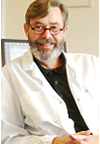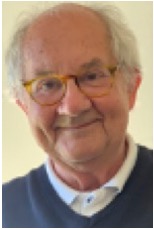
Professor Dan Ericson
Senior Professor of Cariology Department
Malmö University, Sweden
Fewer cavities to fill, less pain, healthier gums, more teeth to smile with, better breath at less
cost - is that possible?
Yes, and it is all about having a competent and caring dental team that knows what they are
doing.
Today:
Dental diseases, such as caries and periodontitis, are affecting most people in the world. The cost
for restoring teeth and periodontal surgery is increasing dramatically. All dental offices
provide such treatment when the diseases have progressed to an advanced stage. Many
patients only visit their dentist when they have a problem or to see if there are cavities
present. Such treatment becomes increasingly more expensive, because the decay processes
are not stopped, and old restorations need to be replaced.
The intelligent alternative is to find out the risk for disease before it has occurred and then
adjust the oral situation so that no disease occurs. Today we have the tools and the
competence to assess risk and methods to prevent disease. Operative treatment can be
dramatically reduced.
What happens at a prevention-oriented clinic?
Typically, clinical and background data are collected, saliva samples are taken for laboratory
analysis and with all this data “knowing all the numbers” an individual risk profile is created
with the aid of computer software.
What does it mean for the patient?
I will give you an example from Scandinavia by Hausen and co-workers (2007), who studied the
effect of risk assessment and individualised prevention in maintenance programs over four
years. Only patients with a high risk were studied: High-risk patients in the maintenance
needed only half the amount of filling and injections, but received more coaching visits to the
dental clinic. The maintenance patients also paid less as compared to those who were not
included in the maintenance program. So risk assessment maintenance meant more and better
teeth at a lower cost.
Also, the experience from many places in Scandinavia indicates that prevention based on risk
assessment is cost-effective in the long run.
Is the choice difficult?

Dr Gunnel Hänsel Petersson
Ex-Chair of Cariology Department
Malmö University, Sweden
Risk tests and risk assessments may be essential for everyone who has not known his/her own risk factors yet. Also, for patients who have known their risk factors already, it will be useful to continue to monitor them, in order to prevent decayed teeth and gum diseases for life.

Professor Emeritus Dowen Birkhed
Living in Malmö, Sweden
Fluoride compounds
Fluoridated toothpaste was introduced in most industrialized countries around
1960, some years later and more slowly in Japan. Today, more than 90% of all
products around the world contain fluoride, mostly sodium fluoride (NaF).
Other fluoride compounds that are used in toothpaste are stannous fluoride and
amine fluoride.
One of the inventors of using fluoride in toothpaste was the Swedish professor
in Cariology Yngve Ericsson, who found that sodium monofluorophosphate
(Na2PO3F; MFP) was compatible with chalk (calcium carbonate; CaCO3), which
was the most commonly used abrasive. Today, other abrasives are used, e.g.
silica, bicarbonate, aluminium oxides and magnesium carbonate, which can be
combined NaF but not with CaCO3. NaF is considered to be somewhat more
caries preventive than MFP, but the difference is rather small, around 10-20%
